Enormous Alcid flight along the New Jersey coast!
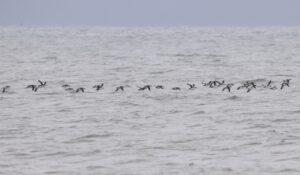
Earlier this week, there was a huge Alcid flight all along the New Jersey coast. I received texts and photos from Cleon’s cousin, Rick Radis. I asked him why he thought this had occurred and he said this is most often because of a food issue in their normal wintering grounds on the North Atlantic. He said the numbers and movement of these Alcids this week are unprecedented. Besides the birds pictured here, he also observed Black Guillemots.
Those of you who regularly bird in New Jersey probably know all about Rick. He has been involved with New Jersey Audubon for many years, contributed countless articles to their magazine, and has served as an editor. He has led countless bird walks into the pine barrens and has been a speaker for more organizations than I can count. He is now proving there is definitely life after retirement age. He is now doing all sorts of consulting work with various groups including on military bases. He still lives in New Jersey and he is the best birder I know – it is such a treat to go birding with him.
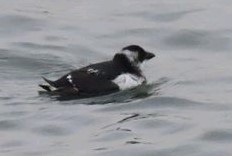
What are Alcids? Alcids are all fairly good-sized, stocky oceanic birds. Pelagic* is the term that is often used to describe them. Look in your field guide and you will see that along both the Atlantic and Pacific coasts, there are about 22 species. You might see these birds if you are on the shoreline or beach. I think the best way is to use your binoculars to scan the water and sky out towards the horizon. Flying birds will be easier to see – most times there will not be just one, but they will be in a flock. To locate these birds in the water, use your binoculars, or preferably a scope, and scan far out on the water for what will look like dark bobbing corks. Unless they are nesting, these birds stay away from land and do not often come in close to the shore.
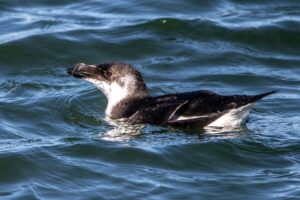
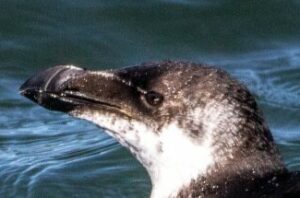 All Alcids dive for fish. They propel themselves with their wings and only use their feet for steering. They actually ‘fly’ underwater. Because this underwater swimming is the most important use of their wings, most have smaller wings in proportion to their bodies and so take-off into the air from the water is more difficult for them than it is for seagulls and terns. Sustained flight can also be more difficult and this is another reason why to see this huge number of Alcids flying along the coast – a long way from the North Atlantic where they normally are this time of year – is so unusual.
All Alcids dive for fish. They propel themselves with their wings and only use their feet for steering. They actually ‘fly’ underwater. Because this underwater swimming is the most important use of their wings, most have smaller wings in proportion to their bodies and so take-off into the air from the water is more difficult for them than it is for seagulls and terns. Sustained flight can also be more difficult and this is another reason why to see this huge number of Alcids flying along the coast – a long way from the North Atlantic where they normally are this time of year – is so unusual.
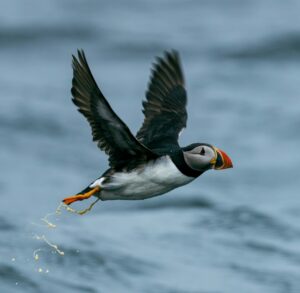
If any of you have been whale watching off the coast of New England, you might have seen Atlantic Puffins who look rather comical in the air. I was fortunate enough to observe many under the guidance of Dr. Stephen Kress who is greatly responsible for successfully reintroducing these Puffins to the islands off the coast of New England where they historically nested. During the 1960’s-80’s, Puffin population dropped to dangerously low levels. Their numbers rebounded, but are again dropping. The populations off the coast of Maine that Dr. Kress reintroduced are stable and thriving. However, most Puffins breed in Iceland and these are the colonies that are in trouble. If you are interested in following the efforts to help this bird – or contributing to the effort – a good place to begin is https://seabirdinstitute.audubon.org. When you get to their website, highlight Conservation and click on Project Puffin.
When I was out on the Atlantic Ocean in an old lobster boat with a few others and Dr. Kress, I had the wonderful experience of a Puffin flying close to the boat, twisting its body, and spewing excrement into my hair and down the side of my face. That may sound totally awful, but it was one of the most wonderful experiences I have ever had – to have an interaction with a wild creature most people had never seen and that was fighting for its very existence! And it was really not all that bad – it smelled of saltwater and was gritty – it wiped right off. And I was grinning the whole time! What a wonderful, cheeky, little bird!
*Pelagic (from the Oxford dictionary) – relating to the open sea.
Birds that are pelagic spend their entire lives out over the ocean. Day and night, they are either on or in the water or flying over the water. They come to land only to nest.

